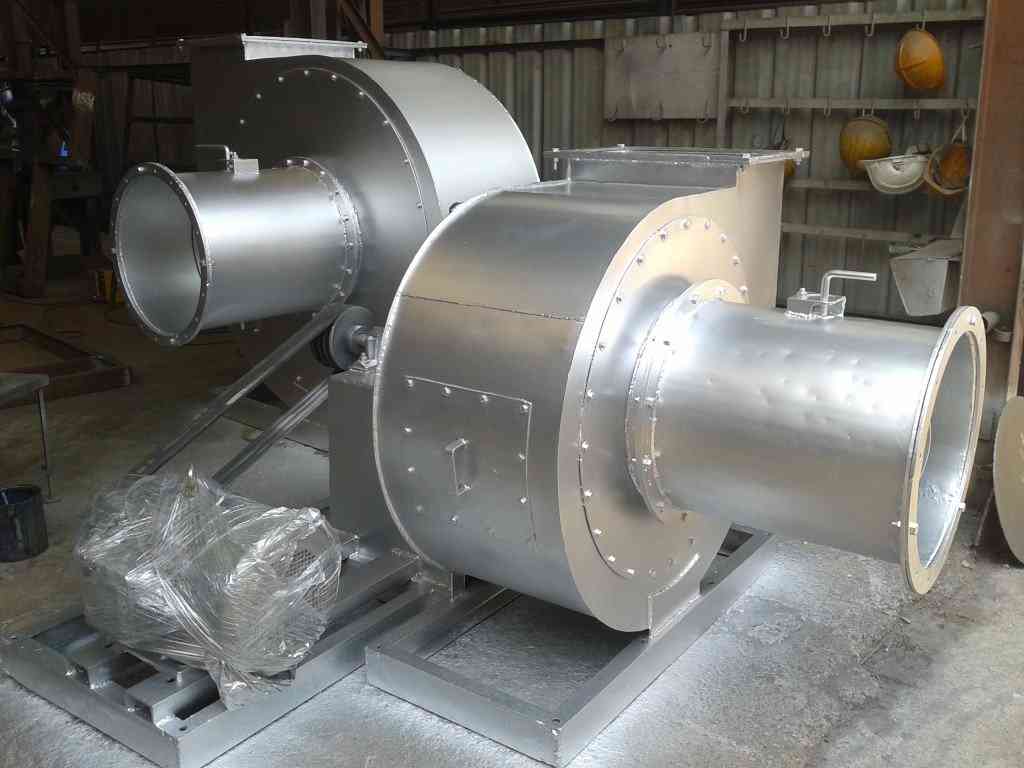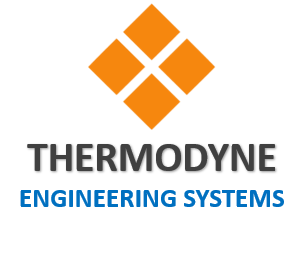Table of Contents
Industrial Fans And Blowers

In a Steam Boiler operation assembly, Industrial Fans and Blowers are the heart of the system. They are responsible for all other subsequent operations taking place in a boiler i.e, combustion of fuels, generation of hot gases and transportation of flue gases through boiler tubes and other equipment.
Thermodyne Engineering System has more than 23 years of experience in manufacturing Industrial blower fans according to the system requirement. We believe that every system has a room for efficiency improvement and it can be increased to a greater extent with proper designing and operation of fans and blowers.
Depending upon the design of blades and its geometry there are 2 types of fans that serve the basic function of forcing the air into the system or drawing the air out from the system.
Every fan is unique and is manufactured keeping in mind the capacity of gas it needs to handle and system head requirement.
Forced Draft fans are used to force air into the combustion chamber, where it mixes with the fuel being supplied. FD fan is used to regulate an appropriate amount of air to fuel ratio in the combustion chamber to maximize the fuel efficiency. Amount of air required for the complete combustion of fuel is calculated using stoichiometry involved during the reaction of the fuel with air.
Generally, 30% excess air is provided for complete combustion of fuel but the excess air quantity depends upon the system to system and must be controlled during the operation.
Induced Draft fans are used in a system to draw flue gases from the combustion chamber and through the rest of the boiler assembly (Air Pre-heater, Dust Collectors, ESPs etc.) to the stack. Flow depends upon the amount of flue gases need to be drawn and head required to draw flue gases from the system depends upon the sum of pressure drops of all equipment installed in the path of the fan.
We, at Thermodyne, design, manufacture & supply both Induced and Forced Draft fans for your system. We have also developed an online calculator for the customers for calculating the motor power required for operating fan at maximum capacity and head.
Specially designed, high-efficiency fans are offered for all boiler applications:
- Forced draft & Induced draft fans for Boilers
- Range varies from 1000 m3/hr to 50,000 m3/hr flow and up to 300°C temperature
- Can be offered with Variable speed controls depending upon specific requirements.
All the fans and its impellers are analyzed for balancing and vibrations before fitments to give increased efficiency, reduced power requirement, trouble-free and reliable performance.
Contact our Sales team for Industrial Blower Fans.
Industrial Fans and Blowers for a Variety of Applications FAQ
An FD fan, or forced draft fan, is a type of fan that is used to supply air to the combustion chamber of a boiler. It is typically located at the inlet of the boiler and creates a positive pressure in the combustion chamber, which helps to ensure that the fuel burns efficiently.
An ID fan, or induced draft fan, is a type of fan that is used to remove flue gases from the combustion chamber of a boiler. It is typically located at the outlet of the boiler and creates a negative pressure in the combustion chamber, which helps to draw the flue gases out of the boiler and into the flue gas stack.
The main difference between an FD fan and an ID fan is the direction of airflow. An FD fan creates a positive pressure in the combustion chamber, while an ID fan creates a negative pressure in the combustion chamber.
There are several benefits to using FD fans and ID fans in boilers. These include:
Improved fuel efficiency
Reduced emissions
Increased safety
Extended boiler life
There are a few drawbacks to using FD fans and ID fans in boilers. These include:
Increased noise levels
Increased maintenance requirements
Increased cost
FD fans and ID fans should be inspected and maintained on a regular basis to ensure that they are operating properly. The frequency of inspection and maintenance will vary depending on the type of boiler and the operating conditions.
Some of the common problems that can occur with FD fans and ID fans include:
Bearing failure
Motor failure
Fan blade damage
Clogged filters
There are a few things that can be done to prevent problems with FD fans and ID fans. These include:
Regular inspection and maintenance
Using high-quality components
Operating the boiler within the manufacturer’s specifications
Some of the safety hazards associated with FD fans and ID fans include:
Fan blades can fly off and cause injury
Fan motors can overheat and start a fire
Fan noise can be a distraction and lead to accidents
Some of the environmental hazards associated with FD fans and ID fans include:
Fan noise can disturb wildlife
Fan emissions can contribute to air pollution
